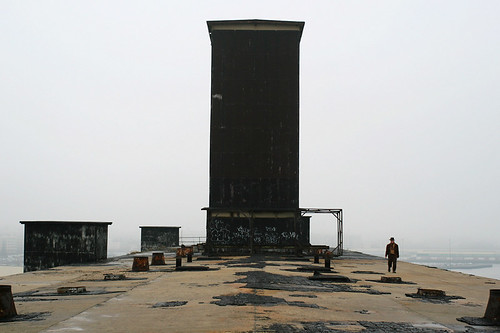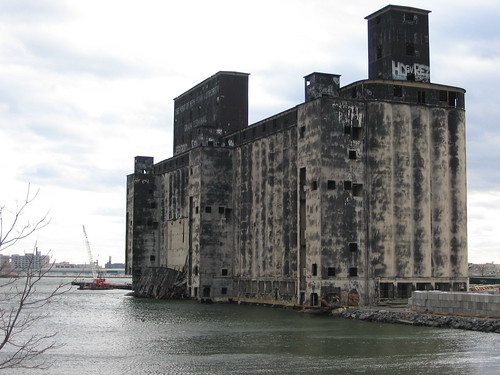MUSEUM IN DRAG
For now, this “Channel” is serving as the syllabus of an architecture studio at NYIT. The subject of the studio is "MUSEUM IN DRAG." At its core, the studio is an investigation of two very basic themes - the fundamental nature of creativity, and scale.
The focus on creativity looks at subversive themes (drag queens as its main) with the assumption being that creativity itself is inherently subversive - any new idea seeks to supplant the existing. By examining subversion and subversive ideas, perhaps a better understanding of creativity can be found.
Additionally the studio takes its cue from Sanford Kwinter ideas of far from equilibrium. “instability it turns out, is the precondition to creativity.” One of the design intents of the studio is to keep the students as uncomfortable and off balance as possible. “Make no small plans.” - Mies has instructed us. This statement is as much about scale, as it is about operating outside your comfort zone.
On the subject of scale the subject matter revolves around the “queen” as ideas of excess. It engages the discussion of scale from the other end of the spectrum. It’s intention is similar to that of the drawing exercise where an image is drawn upside down – a way to trick the mind into drawing the upside-down chair rather than a preconceived notion of a chair. It is a discussion of appropriate scale through a discussion of what is inappropriate or in excess. Fuller asked the question, “how much does your building weigh.” Eisenman draws the worms-eye orthographic projection. (that was eisenmen, correct? please someone correct me if I am wrong.). All these things are attempts at gaining a new understanding by engaging in the act of analysis using a different perspective. And this is the exact intent of the Studio.
It is on the subject of scale - and excessive scale - that the Studio asserts particular relevance within the context of the current economic/cultural/environmental climates. The studio agrees with mumblings of this idea of “Super Modernism.” A critique of modernism revolves around the loss of connection to the humans body/scale - architecture began to operate on the scale of industry, which produced excess in both quantity and size. no longer did size relate back to the human scale, nor quantity relate back to a range of numbers that we experience in our daily lives. Once again we find ourselves struggling to understand the scale of what is around us – Contemporary architects design in the digital realm, then 3D print what has been designed – resulting in a loss of understanding of scale both in the context of design and production. Additionally, due to the rising field of nano-technology we are developing the ability to control material properties – removing our understanding of scale as it result to material.
What are the current figures for the US financial Bailout? – what is it worldwide? How can we evaluate the quantity and scale of these figures that are in the trillions. Just as with the modernist area, we find ourselves in a crisis of scale. So this question of scale and investigations into excess are of particular importance and relevance.
Sub-themes of the Studio are as follows: (and will be expounded upon soon)
+ complexity and contradiction
+ subversive nature of creativity
+ importance of narrative
+ ideas of outcast.
+ideas of excess
+ materiality and meaning
+transformation
Additionally the Studio believes in the value of criticism and once again takes its cue from Kwinter.
“The field of design has two principle venues: the first is the public sphere of mostly promotional press, and the second, the much more insular sphere of academia... they have become allergic to controversy, at times embarrassed even by humor, mild mischief and anything more than the most ironic irreverence…A third venue of design, although in a dangerously atrophied state at present, is the field of criticism.”
It is the desire of the Studio to be humorous, to cause “mild mischief” - stir controversy and debate. Once again a discussion of relevance arises. Built form is very much the physical manifestation of the economic drivers that funding the work. This economic engine has suffered a fate similar to that of Humpty Dumpty – There should be an expectation of a radical shift in what and how we build – Should there be an equally radical shift in terms of how and we is taught within the sphere of academia? Is there currently such discourse?
It is the aspiration of the Studio that the students engage in an open dialog within not only the class, but with the larger public as well. Once again, in an argument for relevance, culturally we find ourselves brushing old modernist ideas of transparency as it pertains to critizism and oversight. It is in this spirit that the studio has opened itself up to public debate.
Once again, this is the class syllabus. It has been hastily put together, resulting in a mid-stream change in direction (the original project was supposed to be a “museum of tenement experience.”). it has not, nor will it be printed out – reflecting the mutability of content and direction of the Studio. For in the spirit of open ended design, the Studio itself is open ended and subject to debate. Once again, outside comment is suggested.
It is the goal of the Studio to produce a book that includes the aggregate of student research as well as the results of such research – the individual proposals. Furthermore, it is the aspiration that such results might be of sufficient quality as to warrant publication. But this is getting way ahead of ourselves. This is just a first year, second semester undergraduate Studio at NYIT, and evening class at the Old Westbury campus in Long Island. Of course, that’s should be no excuse.
The research of the Studio is engaged in, involves the neighborhood of Red Hook, Brooklyn. The neighborhood has been chosen, in part, for its narrative. When Robert Moses put down the highway, he cut off/separated the neighborhood of Red Hook, relegating it to the role of outcast. Additionally, Red Hook is an ideal neighborhood to research ideas of complexity and contradiction as well – it is a neighborhood dealing urban/decay and renewal. The Ikea is across the street from a community garden. The Red Hook projects are right down the street from an artist community. It is a neighborhood in the process of transformation. Research and analysis of the neighborhood will be focused on ideas of narrative as they relate back the themes of the Studio. (scale, creativity and its subversive nature, complexity/contradiction, the outcast.
The building chosen for transformation into the “Museum in Drag” is The Port Authority of New York Grain Terminal. It has been chosen because it bears an obvious resemblance to the Grain Terminals that Corbusier discusses in “Towards a new Architecture.” Research and analysis of the building itself will involve its historic narrative as it relates to the Studio’s themes, research into the scale of the materials used, and an understanding of the proportion and scale of the building as a whole and how it relates to the scale of its surroundings.
These are all very dry, rigorous activities to be engaged in within the context of ideas of drag queens and ideas of subversive creativity – but the Studio draws the relation ship between these activities and that of the utilitarian aspects of the human body. Once the research and analysis (utility) has been completed, then hopefully the Studio’s inner queen will present itself. The unstated goal of this project is the search for PASSION. The students are encouraged to follow their interests, and incorporate them into the project.
It should also be obvious (and noted) that this youtube channel is itself an experiment in teaching and methods of group research –a flickr counterpart for images is in the process of being set up as well. A further explanation in terms of intent may be warrant – and will come later.
And to hit things home this Studio is fundamentally about understanding scale, As the author of this syllabus, I find I am struggling with an understanding of scale in today’s world and how my own actions/ideas relate to their surroundings. In this way this Studio has become intensely personal to me.
 Initially we talked about this project as being exactly what that sounds - not a museum, the contents of relate to drag queens - but a museum that is "dressed in drag" - and not just "in drag" but of the "queen" variety. Addressing, no ATTACKING SCALE. The intent being to gain an understanding of what "too much" means through actual experience (the only path towards true knowledge). You might also think of it another way. Its a discussion of what is "appropriate" or "within SCALE" by examining its opposite. (a figure/ground of appropriateness of scale if you will).
Initially we talked about this project as being exactly what that sounds - not a museum, the contents of relate to drag queens - but a museum that is "dressed in drag" - and not just "in drag" but of the "queen" variety. Addressing, no ATTACKING SCALE. The intent being to gain an understanding of what "too much" means through actual experience (the only path towards true knowledge). You might also think of it another way. Its a discussion of what is "appropriate" or "within SCALE" by examining its opposite. (a figure/ground of appropriateness of scale if you will).
